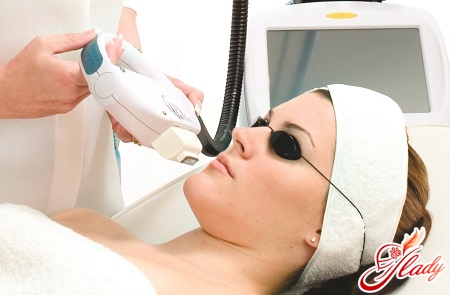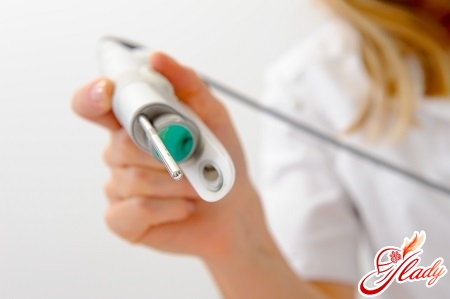
Basaloma is a skin cancer on the face or neck,which first is a small pinkish spot with a peeling surface, which then grows into nodules that rise above the surface of the skin. Usually such a disease occurs in the elderly and in those who often and much is in the sun. The disease is very dangerous, in the absence of treatment or failure to comply with its scheme, the basal cell can develop into a large ulcer that affects not only the soft tissues, but also the cartilage, the bones of the skull. Do not self-medicate. If you have nodules on your skin, you should immediately contact your doctor. Today, there are four stages of formation on the skin, treatment depends on the stage of cancer, the course of the disease.
Types of basalioma: from superficial to cicatricial form
Basaloma is divided into several species, among which are:
- Nodular form in the form of a small nodule thatfirst it measures up to 5 mm. The nodule is translucent, the vessels are visible, the cancer is prone to peripheral development, the density is similar to cartilage, often fusion of individual foci is observed. Nodular skin cancer often turns into ulcerative infiltrative. Healing of ulcers is impossible, the prognosis for this form is usually unfavorable, urgent treatment is needed that will help get rid of the disease;
- the surface form isFormation in the form of a plaque, which is covered with crusts, is atrophied in a mosaic pattern. This form is the simplest, it is benign, skin infiltration with such a basalioma is almost always absent;
- cicatricial form externally is aformation in the form of a pinkish shade with distinct edges. Infiltration is pronounced, localization on the scalp, the nose is unfavorable, as it often leads to lesions of cartilage, bone tissue;
- special forms of basal cell carcinoma can be characterized by a variety of external manifestations, it is necessary to consult a specialist oncologist.

Diagnosis of the disease
With basal cell carcinoma it is necessary to carry outcorrect diagnosis, which will help not only to identify the disease, but also its stage. The surface of the facial skin is carefully inspected, visual inspection of mucous membranes, palpation of distant and regional lymph nodes is also required. In this case, often use a magnifying glass, so that even a small area of the skin of the face is perfectly visible. The histological sampling of the material is carried out - it is scraping, smear-imprinting, biopsy. The method of sampling depends on the appearance, the condition of the tumor. For open sores, it is necessary to remove the imprint, after cleaning the surface of scales and crusts. Scraping is removed with a scalpel, distributing the resulting material over the surface of the slide. A biopsy is performed if the surface of a large enough tumor is not damaged. Ultrasound examination makes it possible to determine what depth of basal cell, its infiltration, the true size. This is done to determine the depth of the tissue before removal. Correct and timely diagnosis allows you to determine the extent to which skin cancer has reached. There are four degrees of basal cell development:
- the first stage: a small formation up to 2 cm, bounded from all sides by the dermis;
- the second stage: the formation becomes more than 2 cm, sprouts across the entire thickness of the skin, but does not involve subcutaneous fatty tissue;
- the third stage: the basal cell extends to all the tissues around;
- the fourth stage: not only soft tissues are affected, skin cancer penetrates into the bones and cartilages that are near.

Methods of treatment of basal cell carcinoma
Today, skin cancer, a variety of whichis basal cell, can be treated in various ways, but it is necessary to begin to do this immediately after the appearance of the first symptoms. In this case, the basal cell will be eradicated very quickly, there will be almost no visible traces on the skin. In any case, the treatment regimen must necessarily be agreed with the doctor. Today, there are six ways in which basal cell can be cured:
Prognosis after treatment Treatment of basal cell carcinoma is possibleOnly in a hospital or a doctor-appointed scheme. The prognosis can be very different, it depends on the stage of the disease at which the treatment was started. In the first and second stages, the prognosis is favorable, complete recovery occurs in about 90% of cases. In the third and fourth stages, the disease is more difficult to treat, surgical intervention is required, after scar tissue or destruction there are scars, extensive defects. At these stages, tumors recur in half the cases. There may be destruction of the bones of the skull, cartilage, which entails the need for additional plastic surgery. The prognosis for life as a whole is favorable, but only if the basal cell begins to be treated on time. Any treatment and surgical intervention can be carried out only after examination by a doctor, no medications, creams and ointments can be used without consulting a specialist, home treatment simply does not exist. 
Preventive measures: how to resist the disease?
For groups at risk, compliancepreventive measures that can help prevent the appearance of basal cell on the face. We offer a few simple tips that will help to resist this terrible disease:
- in the summer try not to walk down the street duringthe greatest solar activity, from 11.00 to 16.00. If this is not possible, then use creams with special UV filters, try to close the skin as much as possible from the sun's rays. Most often, skin cancer affects the face and neck, so it is recommended to protect these places more carefully;
- follow the correct diet, which inmust necessarily include vegetable proteins, not animals. Ideal option for this are nuts, beans, you need to eat more vegetables;
- Do not touch old scars, do not injure them. If they are constantly exposed to friction from clothing, then go to the doctor, consult with him;
- in the presence of poorly healing wounds and ulcers, intensive treatment should be started, as they can grow into a basaloma.
Basalioma is a malignantSkin, which requires immediate treatment and constant monitoring by a doctor. This is skin cancer that can not be harmless, therefore, in the presence of characteristic symptoms, it is necessary to immediately see the doctor, exactly follow all the recommendations and treatment regimens. At home, there is no treatment, all the proposed so-called non-traditional and alternative methods are not effective, they will only do harm.









